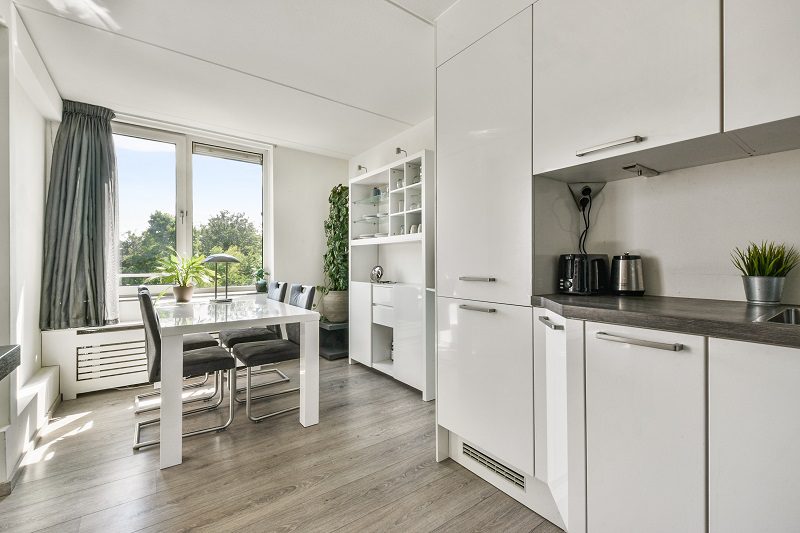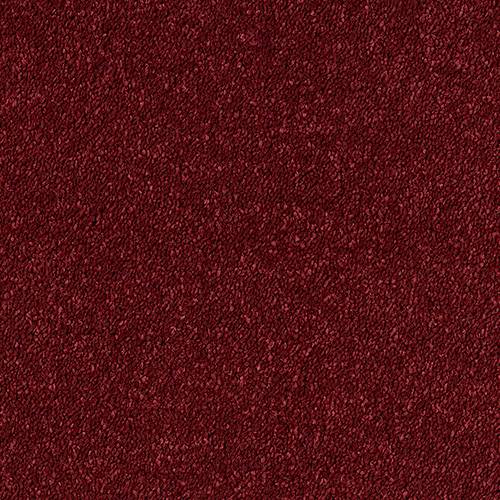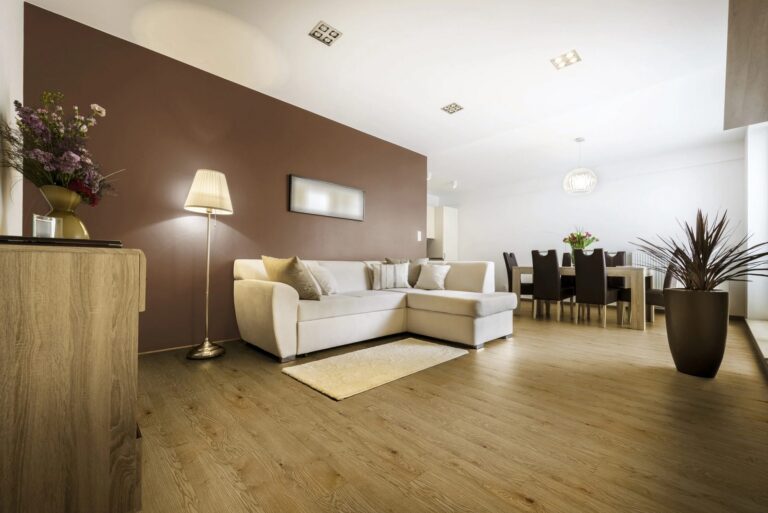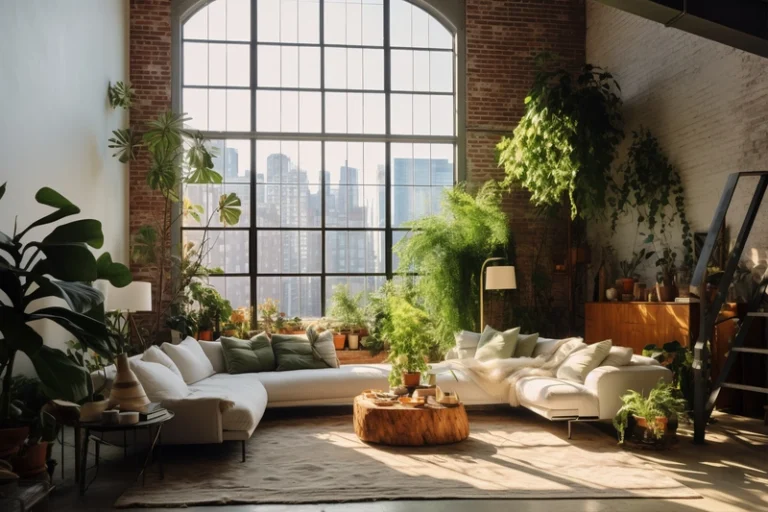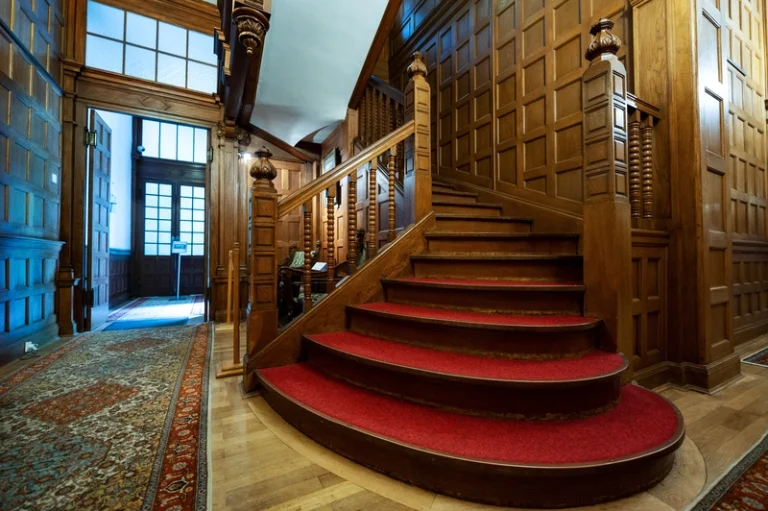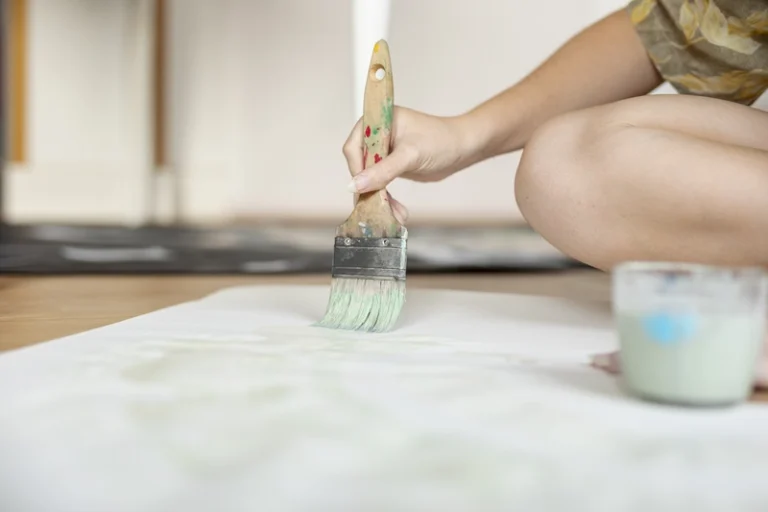Are you considering LVT flooring for your kitchen but unsure if it’s the right choice?
We will explore the benefits of LVT flooring, such as water resistance, durability, and easy maintenance. We will also discuss the variety of designs available and whether LVT flooring is suitable for kitchens.
We will delve into the drawbacks of using LVT flooring in kitchens and explore alternative options like ceramic tile, vinyl sheet flooring, and laminate flooring.
Learn how to properly maintain LVT flooring in your kitchen!
What Is LVT Flooring?
LVT flooring, also known as Luxury Vinyl Tile flooring, is a versatile and durable flooring option that replicates the look of natural materials like wood or stone. It is made up of multiple layers including a wear layer, design layer, core layer, and backing layer.
LVT flooring is particularly popular for its ease of installation. With the option to install it as floating floors or glue-down, it offers flexibility for various spaces. The scratch-resistant nature of LVT makes it a practical choice for high-traffic areas such as kitchens and hallways. Its moisture-resistant properties make it suitable for bathrooms and basements. The UV coating on the surface layer helps prevent fading and keeps the colours vibrant over time, ensuring longevity and aesthetic appeal.
See product: Floorify Planks Stonehenge
Benefits of LVT Flooring for Kitchen
LVT flooring offers numerous benefits, including being scratch-resistant, moisture-resistant, easy to maintain, and available in a wide range of designs and patterns. It provides a cost-effective and durable flooring solution for both residential and commercial spaces.
One of the key advantages of LVT flooring is its exceptional durability, making it an ideal choice for high-traffic areas. Whether in homes, offices, or retail spaces, LVT flooring stands up well to daily wear and tear, maintaining its quality over time. Its moisture-resistant properties make it suitable for areas prone to spills or humidity, such as kitchens, bathrooms, or even basements.
a. Water Resistance
Water resistance is a key feature of LVT flooring, making it an ideal choice for areas prone to moisture such as kitchens, bathrooms, and basements. The waterproof properties of LVT flooring help prevent damage from spills and leaks.
The moisture-resistant nature of LVT flooring plays a significant role in its longevity, ensuring that the flooring maintains its pristine look for years to come. This durability against water exposure not only safeguards the individual planks or tiles from warping or swelling but also protects the subfloor beneath, preventing any potential structural damage over time.
b. Durability
Using luxury vinyl tiles for kitchen utility is renowned for its durability due to the wear layer that protects the surface from scratches, stains, and daily wear and tear. This feature ensures that LVT flooring maintains its aesthetic appeal and structural integrity over time.
The wear layer of LVT flooring acts as a shield, safeguarding it against the rigours of daily use. Whether it’s high heels, pet claws, or heavy furniture, this scratch-resistant layer ensures that the flooring retains its pristine look.
To further enhance durability, regular maintenance practices such as sweeping, mopping, and using manufacturer-recommended cleaners play a crucial role. By following these simple maintenance routines, homeowners can prolong the lifespan of their LVT flooring and enjoy the benefits of a floor that combines the beauty of real hardwood with unmatched durability.
c. Easy Maintenance
One of the main benefits of LVT flooring is its easy maintenance.
Regular sweeping and occasional mopping with a mild cleaner is usually sufficient to keep LVT floors looking pristine. This simple routine helps to remove dust, dirt, and spills that can accumulate on the surface.
The scratch-resistant nature of LVT flooring reduces the need for refinishing, saving both time and money in maintenance. To further protect the longevity of your LVT floors, consider placing furniture pads under heavy items to prevent scratches and dents.
The UV coating on LVT flooring also plays a crucial role in preventing discolouration and fading, ensuring that your floors retain their original beauty for years to come.
d. Variety of Designs
LVT flooring offers a wide variety of designs and patterns that mimic natural materials such as wood, stone, and ceramic tiles.
This versatility allows individuals to effortlessly transform their living spaces into stylish and modern areas that exude elegance and charm. With luxury vinyl plank and traditional Luxury Vinyl Tiles, one can explore endless possibilities, from rustic farmhouse motifs to sleek contemporary finishes. The trend of incorporating intricate geometric designs and bold colours on LVT flooring is gaining popularity, giving spaces a unique and personalised touch.
Is LVT Flooring Suitable for Kitchens?
Is LVT suitable for Kitchens? LVT flooring is a popular choice for kitchens due to its water resistance, durability, and easy maintenance features. It offers the aesthetic appeal of natural materials without the drawbacks, making it a suitable flooring option for kitchen spaces.
Luxury vinyl tiles (LVT) are particularly ideal for kitchens due to their remarkable resilience against water and high durability in the face of everyday wear and tear. They successfully mimic the look of natural materials like wood or stone while providing enhanced performance benefits. The scratch-resistant nature of LVT ensures that your kitchen floor remains pristine, even in high-traffic areas prone to scuffs and marks. With LVT flooring, you can enjoy a beautiful kitchen space without compromising on practicality and longevity.
What Makes LVT Flooring Suitable for Kitchens?
LVT flooring is an ideal choice for kitchens due to its scratch-resistant surface that can withstand the high traffic and potential impact of kitchen activities. The easy maintenance and water-resistant features further enhance its suitability for kitchen environments.
The wear layer of LVT flooring adds an extra level of protection against scratches, ensuring longevity and durability in a kitchen setting. The moisture-resistant properties of LVT make it highly resistant to spills and splashes, reducing the risk of damage from water exposure. This makes it a practical and stylish choice for those seeking a flooring option that can handle the demands of a busy kitchen lifestyle.
Drawbacks of LVT Flooring for Kitchens
Whilst LVT flooring offers numerous benefits, there are some drawbacks to consider when using it in kitchens. These include susceptibility to scratching, potential slipperiness, and a lesser resilience compared to other flooring options.
a. Prone to Scratching
One drawback of using LVT flooring in kitchens is its susceptibility to scratching, especially in high-traffic areas or with sharp objects. Whilst the wear layer provides some protection, heavy furniture or improper cleaning techniques can lead to visible scratches on the surface.
Scratching is a common concern among homeowners who opt for LVT flooring, as it may not boast the same durability as real wood or ceramic alternatives. To minimise scratches, consider using felt pads under furniture legs to prevent dragging and investing in rugs or mats in high-traffic spots.
Regular maintenance plays a crucial role in preserving the surface of LVT flooring. Avoid using harsh chemicals or abrasive tools during cleaning, as they could damage the wear layer, compromising its protective abilities.
b. Can Be Slippery
Another drawback of LVT flooring in kitchens is its potential slipperiness, especially when wet.
This safety concern can disrupt daily activities and pose a risk of slips and falls.
To mitigate this hazard, consider opting for moisture-resistant vinyl LVT flooring options, which offer better traction even in damp conditions.
Regularly cleaning spills and water promptly, placing rugs with non-slip backings near the sink, stove, or other wet areas, and ensuring proper ventilation to reduce moisture accumulation can contribute to a safer kitchen environment.
c. Not as Resilient as Other Flooring Options
Compared to other flooring options like hardwood or ceramic tiles, LVT flooring may not be as resilient to heavy impact or extreme temperatures. This limitation should be considered when evaluating the suitability of LVT flooring for kitchen use.
The durability of LVT flooring shines through in its resistance to scratches, stains, and water damage. While hardwood floors can dent and scratch easily, LVT planks can withstand high foot traffic without losing their appeal.
When compared to engineered wood flooring, LVT is generally more resistant to moisture infiltration, making it a preferred choice for areas prone to spills or high humidity levels. Brands like Karndean have taken this technology further by offering enhanced wear layers that boost the floor’s longevity.
The Alternatives of LVT Flooring for Kitchens
Aside from luxury vinyl flooring for the kitchen, there are alternative flooring options to consider. These include ceramic or porcelain tiles, vinyl sheet flooring, laminate flooring, hardwood flooring, and cork flooring, each offering unique benefits and drawbacks.
When considering ceramic or porcelain tiles, one immediately thinks of their durability and water resistance, making them ideal for high-traffic areas like kitchens. On the other hand, vinyl sheet flooring provides a wide range of designs and is budget-friendly but may not be as long-lasting as ceramic tiles or hardwood.
Laminate flooring offers a cost-effective alternative to hardwood flooring with easy installation and maintenance, although it may not have the same luxurious feel. Hardwood flooring is timeless, adding warmth and elegance to any space, but requires more maintenance compared to other options. Finally, cork flooring is eco-friendly, comfortable to walk on, and provides good insulation, although it can be prone to scratches.
a. Ceramic or Porcelain Tile
Ceramic or porcelain tiles are popular choices for kitchen flooring due to their durability, water resistance, and wide range of design options. These tiles are easy to maintain and provide a versatile and stylish flooring solution.
One of the key benefits of ceramic or porcelain tiles in the kitchen is their ability to withstand high traffic and daily wear and tear. Along with their durability, these tiles offer excellent water resistance, making them ideal for areas prone to spills and splashes. The extensive range of design options, including various colours, textures, and patterns, allows homeowners to customise their kitchen space to suit their style preferences. With proper installation, these tiles can enhance the aesthetic appeal of the kitchen while offering a practical and functional flooring solution.
b. Vinyl Sheet Flooring
Linoleum flooring is another option for kitchen spaces, offering water resistance, easy maintenance, and budget-friendly choices. It provides a cushioned feel underfoot and can be installed seamlessly for a consistent appearance.
One of the main advantages of linoleum sheet flooring is its low maintenance needs. Unlike some other types of flooring, such as laminate flooring, linoleum is highly resistant to scratches and scrapes, making it ideal for high-traffic areas like kitchens.
The fitting process for linoleum sheet flooring is relatively straightforward, whether you choose adhesive or loose lay methods. This makes it a popular option for homeowners seeking a quick and stress-free update to their kitchen floors.
c. Laminate Flooring
Laminate flooring is a versatile option for kitchens, offering the look of hardwood at a more affordable price point. It is easy to install, durable, and available in various styles, making it a popular choice for kitchen renovations.
Scratch-resistant laminate flooring is particularly ideal for kitchen applications, as it can endure high traffic and potential spills without showing signs of wear. The wide range of design options, including wood, stone, and tile patterns, allows homeowners to achieve the desired aesthetic while benefiting from the practicality of engineered wood. Professional installation is recommended to ensure a seamless finish and maximum longevity, as proper alignment is crucial for a lasting and visually appealing outcome.
See product: Elka 8mm V-Groove Country Oak
d. Hardwood Flooring
Hardwood flooring adds warmth and elegance to kitchen spaces, creating a timeless appeal. Whilst it requires more maintenance compared to LVT flooring, hardwood offers a natural beauty and durability that can enhance the overall aesthetics of the kitchen.
One of the key benefits of hardwood flooring in kitchens is its ability to add value to a home. Not only does it elevate the visual appeal, but it also increases the property’s market worth. The versatility of hardwood allows for various design options, from traditional to modern styles, making it a versatile choice for any kitchen decor. Hardwood flooring is known for its longevity, with proper care and maintenance, it can last for decades, providing an enduring investment in the beauty of your kitchen space.
See product: Ted Todd Classic Tones Sherwood – Herringbone (500mm x 100mm)
e. Cork Flooring
Cork flooring is a sustainable and moisture-resistant option for kitchen flooring. It offers natural thermal insulation, a comfortable underfoot feel, and sound absorption properties, making it a practical and eco-friendly choice for kitchen environments.
With its unique cellular structure, cork provides natural resilience to impact and pressure, ideal for high-traffic areas like kitchens. The UV coating on cork flooring helps prevent fading and discolouration, enhancing its durability. An added advantage of cork flooring is its resemblance to real wood, offering the aesthetic appeal of hardwood without the environmental drawbacks.
When considering installation, it’s important to acclimatize the cork planks to the room’s humidity levels to prevent warping.
How to Maintain LVT Flooring in Kitchens Properly
Proper maintenance of LVT flooring in kitchens is essential to preserve its longevity and appearance. Regular sweeping to remove debris, prompt clean-up of spills, and using manufacturer-recommended cleaning products are key practices to ensure the durability and aesthetic appeal of LVT flooring.
To prevent scratches and scuffs, placing felt pads under furniture legs and using rugs in high-traffic areas can help protect LVT flooring. It’s essential to avoid dragging heavy furniture across the floor to prevent damage. Another important aspect is to avoid using abrasive cleaners or harsh chemicals that can deteriorate the protective coating of the LVT flooring.
Enhance the beauty of your kitchen area with a range of Luxurious Vinyl Tiles options from TEKA Flooring. TEKA offers an extensive range of colours, styles, and textures in their Luxury Vinyl Tiles collection, sourced from top brands such as Karndean, Floorify, and Luvanto.
Also, get a free consultation and more of our services for your finest kitchen flooring with TEKA Flooring!
Read Also:







